Intel Core i5 4th Generation Desktop Processor
₹1,950
Intel Core i5 4th Generation processor offers reliable performance and efficiency for everyday computing, gaming, and multimedia tasks. A cost-effective choice with four cores and integrated graphics, it’s still a viable option for budget-conscious builders.
Model List
- Intel Core i5-4570 – 3.20GHz
- Intel Core i5-4570T – 2.90GHz (2 Cores)
* Any processor from the above list will be delivered based on availability
Intel Core i5 4th Generation Desktop Processor: Unleash the Power of Haswell
The Intel Core i5 4th Generation processor, codenamed Haswell, represents a significant leap forward in desktop computing. These processors offered a compelling blend of performance, efficiency, and affordability, making them a popular choice for a wide range of users – from everyday computing to demanding tasks like gaming and video editing. This comprehensive guide delves deep into the features, benefits, and specifications of the Intel Core i5 4th Generation, helping you understand why it remains a relevant and valuable option even years after its release.
Understanding the Haswell Architecture:
The 4th Generation Intel Core i5 processors were built on the 22nm Haswell microarchitecture. This architecture brought significant improvements over its predecessor, Ivy Bridge, focusing on power efficiency and enhanced performance. Key architectural enhancements included:
Improved Instruction Set: Haswell incorporated refinements to the instruction set, leading to faster execution of common computing tasks. This resulted in better overall performance and responsiveness.
Enhanced Power Management: Haswell’s power management capabilities were significantly improved, allowing for longer battery life in laptops (where applicable) and lower power consumption in desktop systems, leading to reduced energy bills.
Integrated Graphics: The integrated Intel HD Graphics 4600 (usually) offered a noticeable improvement in graphics performance compared to previous generations, making it suitable for casual gaming and multimedia playback.
Support for Advanced Technologies: These processors supported advanced technologies like Turbo Boost 2.0, allowing for dynamic clock speed adjustments based on workload. Hyper-Threading further improved multitasking capabilities by allowing each core to handle multiple threads simultaneously.
PCIe 3.0 Support: The support for PCIe 3.0 provided faster data transfer speeds for peripherals, improving overall system performance.
Models within the Intel Core i5 4th Generation Family:
The Intel Core i5 4th Generation family encompassed a wide range of models, each tailored to specific needs and budgets. These models varied based on:
Clock Speed: The base clock speed measured in GHz determined the baseline processing power. Higher clock speeds generally indicated better performance.
Cache Size: Larger cache sizes (L3 cache typically) improved performance by storing frequently accessed data, reducing the need to access slower system memory.
Number of Cores: Most Intel Core i5 4th Gen processors featured four cores, providing excellent multitasking capabilities.
Turbo Boost Frequency: The maximum clock speed attainable with Turbo Boost technology. This technology dynamically increased the clock speed when needed, resulting in improved performance during demanding tasks.
TDP (Thermal Design Power): This rating indicated the maximum power consumption of the processor, influencing cooling requirements and power efficiency.
Key Features and Benefits:
Exceptional Performance: The Haswell architecture delivered a significant performance boost over previous generations, making it suitable for a wide variety of applications, from everyday tasks like browsing and email to more demanding tasks like photo and video editing.
Enhanced Multitasking: The four cores and Hyper-Threading technology enabled smooth multitasking, allowing users to run multiple applications simultaneously without experiencing significant performance slowdown.
Improved Power Efficiency: The improved power management features resulted in lower energy consumption, leading to reduced operating costs and a smaller environmental footprint.
Integrated Graphics: The integrated Intel HD Graphics 4600 was a considerable upgrade over previous generations, providing sufficient graphical capabilities for everyday use, casual gaming, and multimedia playback. This reduced the need for a dedicated graphics card in many scenarios.
Affordable Price Point: Compared to higher-end processors, the i5 4th Gen offered an excellent balance between performance and price, making it an attractive option for budget-conscious users.
Excellent Compatibility: These processors are compatible with a vast range of motherboards and peripherals, providing users with a significant amount of flexibility in building or upgrading their systems.
Applications and Use Cases:
The Intel Core i5 4th Generation processors were well-suited for a wide range of applications, including:
General Purpose Computing: Excellent for everyday tasks like web browsing, email, document editing, and multimedia playback.
Gaming: Capable of handling many modern games, especially when paired with a dedicated graphics card. The integrated graphics are suitable for less demanding titles.
Video Editing: Sufficient for lighter video editing tasks, but more demanding projects might benefit from a more powerful processor.
Photo Editing: Handles photo editing software smoothly, providing efficient performance for tasks like image manipulation and enhancement.
Programming and Software Development: Offers adequate processing power for programming and software development tasks.
Choosing the Right Intel Core i5 4th Generation Processor:
Selecting the appropriate processor involves considering specific needs and budget constraints. Crucial factors to consider include:
Intended use: Demanding applications like gaming or video editing require a higher-clocked processor with a larger cache.
Budget: The range of Intel Core i5 4th Gen models offers options for various budget levels.
Motherboard Compatibility: Ensure the chosen processor is compatible with the motherboard.
TDP: Higher TDP processors require more efficient cooling solutions.
Conclusion:
The Intel Core i5 4th Generation processor, despite its age, remains a viable and cost-effective option for many users. Its compelling performance, power efficiency, and wide range of applications make it a strong contender, especially for those seeking a reliable and capable system without breaking the bank. While newer generations offer advancements, the Haswell architecture provided a solid foundation that still delivers impressive results for a variety of tasks. By carefully considering the specific requirements and understanding the nuances of the different models, users can easily find an Intel Core i5 4th Generation processor that perfectly fits their needs and budget.
This detailed overview has equipped you with the necessary knowledge to make an informed decision, allowing you to unleash the power of Haswell for your computing endeavors. Consider your workload, budget, and future upgrade plans when making your selection. The legacy of Haswell continues to provide value in the used computer market, offering a capable and affordable computing solution for those seeking a reliable and powerful processor even today.
Its widespread compatibility and robust performance remain key selling points in a continuously evolving technological landscape. Remember always to check compatibility with your motherboard and other components before purchasing.



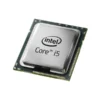
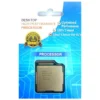


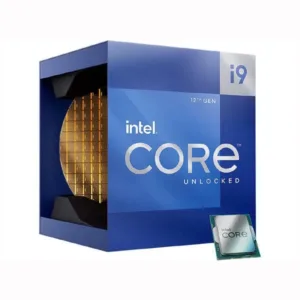






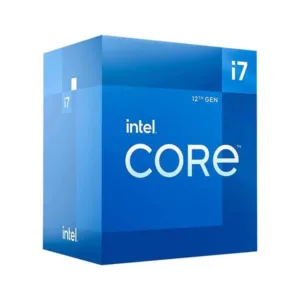
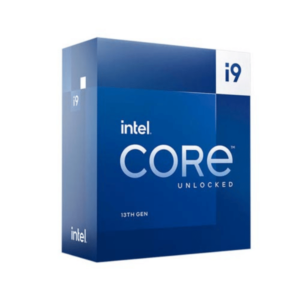




Reviews
There are no reviews yet